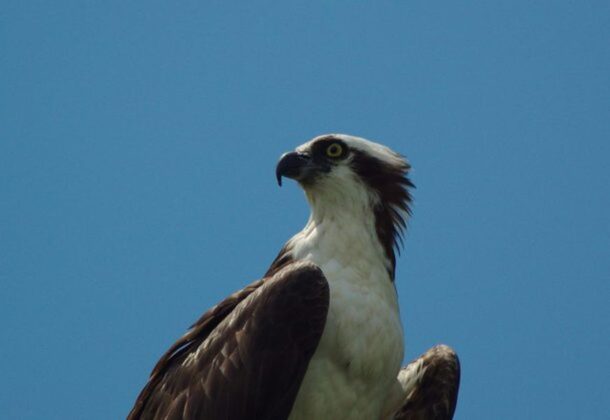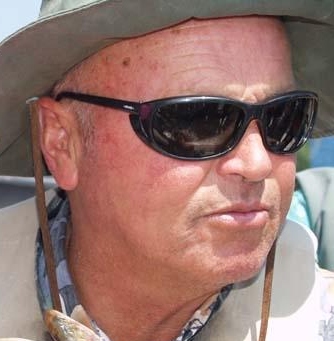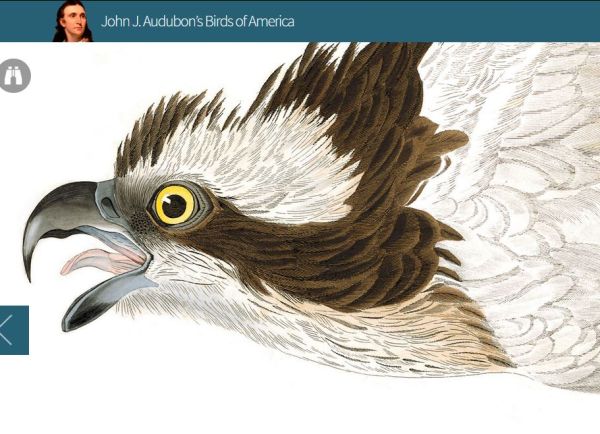Message from the Cap’n — Awaiting the Osprey

Message from the Cap’n is a compilation of fishing advice, waterman and weather insights,
Chesapeake lore, and ordinary malarkey from the folks who keep their feet wet in the Potomac and St. Mary’s rivers.
February 22, 2022: From the Interpretive Buoy System the water temperature in the Lower Potomac is over 42 degrees and the salinity holding around 13 PSU (practical salinity unit). With a random high of 65 degrees here and there these past weeks, we long for the spring cycles of life to begin around the Chesapeake.
Chief among them is the Return of the Osprey to the area where they were born.
As we watch and bend our ears to the sky, it can become confusing to identify birds correctly. Thanks to All About Birds for outstanding, instructive identification links below. For on the wing, I like to say:
- Turkey Buzzards fly with a distinct V in the wing pattern.
- Bald Eagles fly with flat wings.
- Ospreys fly with a downward slant at their elbows.
I’d also like to say, the birds you are seeing now, are very likely not osprey returning to the Chesapeake. Not quite yet. Eagles are nesting now. But their nests aren’t often so open as osprey nests. Pulling from prior years’ posts and observations, info that is still important:
John Audubon’s osprey jives with the wild-eyed, cheeping observations from the nesting capital of the Chesapeake: St. George Island. There were 60+ nesting pairs at the start of the 2020s and youngsters arrive every year. Last year one completely new nest was constructed to our north and a new couple miserably failed to make their first nest on a triangular marker to the south. Hopefully this year they’ll have learned from their past mistake.
*The first Ospreys generally show up at St. George Island in early March, following the tale I’ve always been told, and have witnessed nearly every year of my lengthening life, “Ospreys reach St. George Island by St Patrick’s Day.”
*Ospreys generally mate for life but will pick up another partner after the death of one or the other. But divorces do occur. And with more webcams and osprey observers around the world there are also reports of occasional out of the home-nest mating action taking place.
*The males usually return to their nest from their Central American winter roosting and wait for their mate to arrive. Although that hasn’t been the case for the past two breeding seasons in the oldest nest by my oyster house. The female arrived first and fought off suitors and attackers until her mate arrived a month later.
Osprey do not migrate together but reunite at their nest. They travel the 77th parallel when migrating. The ospreys born last year will not return this spring, some might not even come next spring. Even those 2-year-olds who do arrive, they are not ready for serious mating and rarely do mate and start a nest until they are three.
An osprey’s average lifespan is 7 to 10 years. A “banded osprey” carcass found in South America in the 1980s was 22, reported Patuxent River naturalist Steve Cardano.
Males are smaller with white breasts or with minimal markings. Female markings can look like she’s wearing a necklace. This isn’t a 100% identification method. They are similar looking and exhibit many similar behaviors. Both males and females protect the nest from predators and rivals wanting their nest.
During their early weeks of courtship — spent repairing the nest or building anew, males may perform courtship dances above the nest, dropping magnificently. Other pairs fly synchronized loops up and down Island Creek both before and after brooding duties are done.
Keep looking and listening: They will be here by St Patrick’s Day. Hurrah!
Till next time, remember “It’s Our Bay, Let’s Pass It On.”
To learn about tours and trips into the Chesapeake, keep in touch with Fins + Claws on Facebook . Catch up on Messages from the Cap’n Member Page. Please visit Cap’n Jack’s lore and share with your social media sites. Or reach him here: [email protected] or 240-434-1385.






















